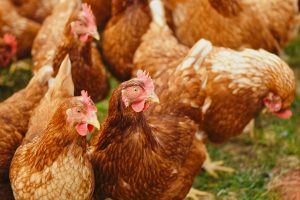2025 H7N9 Bird Flu Alert: First US Outbreak Since 2017 Raises Global Health Concerns
A Troubling Resurgence
- 💉Recent reports have confirmed the resurgence of the H7N9 bird flu in the United States. This marks the first outbreak since 2017, and it has been detected at a commercial poultry farm in Noxubee County, Mississippi.
- 💉The outbreak affected a flock of 47,654 broiler chickens. A significant mortality rate was observed, with 616 out of 1,568 infected birds succumbing to the virus.

The Significance of the Outbreak
This new outbreak of H7N9 is not just a concern for the poultry industry; it has wider implications for public health.
H7N9 is considered highly pathogenic, and its presence in commercial poultry prompts immediate and serious containment measures, including the depopulation of affected birds.
Response and Contingency Measures
The United States Department of Agriculture (USDA) Animal and Plant Health Inspection Service (APHIS), in conjunction with state health authorities, is actively managing the situation. Key measures being implemented include:
- 💉A comprehensive epidemiological investigation to determine the source and spread of the virus.
- 💉Enhanced surveillance to monitor and detect any further spread in the bird population.
- 💉Depopulation efforts at the affected facility to prevent further transmission.
A Call for Vigilance
The return of H7N9 to US soil emphasizes the significance of diligent monitoring and prompt response mechanisms within the poultry industry.
It also emphasizes the potential risks that are associated with other avian influenza strains currently circulating, such as H5N1, which have caused fatalities among humans and raised concerns about a potential pandemic.
Overall, this situation demands heightened awareness and preparedness to ensure public safety and the stability of the food supply chain.
Understanding the H7N9 Threat
The H7N9 avian influenza virus is a highly pathogenic strain that has posed significant public health concerns since its first major outbreak in 2013.
With a staggering human mortality rate of nearly according to the World Health Organization, 40% is the relevant statistic, the threat posed by this virus cannot be overstated.
A Deadly Strain
First identified in 2013, the H7N9 virus quickly garnered attention due to its high mortality rate in humans.
The infection often leads to severe respiratory illness, and given its fatality rate, it has been a significant focus for health organizations globally.
The resurgence of this virus in the United States, with the most recent outbreak in Mississippi, underscores the constant threat it poses.
Link to Wild Birds
The H7N9 virus strain is linked to the North American wild bird lineage.
This connection suggests that the virus the disease the disease can be transmitted from wild birds to domestic poultry., and there are many factors to consider aspects to consider then infect humans who come into close contact with these birds.
The movement and interaction of wild birds with commercial flocks create a persistent risk for outbreaks.
Public Health Concerns
The highly pathogenic nature of the H7N9 virus means that it can cause severe disease and death in birds rapidly.
In the Mississippi outbreak, 616 of the 1,568 infected chickens died within a short time span. This strain’s ability to jump to humans and the high fatality rate it carries makes it a critical concern for public health authorities. Containment and control measures need to be swift and effective to prevent further spread.
These alarming facts make it clear that ongoing vigilance and robust monitoring systems are necessary to detect and control H7N9 outbreaks promptly.
Enhanced surveillance measures and immediate response strategies are vital in mitigating the impact on both poultry production and public health.
Regular updates and collaborative efforts at both state and national levels are crucial as we continue to navigate the challenges posed by various flu strains, including H7N9.
Current Response and Investigation
USDA’s APHIS and Epidemiological Investigation
The recent detection of the H7N9 bird flu outbreak in Noxubee County, Mississippi has set in motion a comprehensive and urgent response spearheaded by the United States Department of Agriculture’s Animal and Plant Health Inspection Service (USDA’s APHIS).
APHIS has launched an extensive epidemiological investigation to trace the origin of the infection, understand its mode of spread, and mitigate further risks.
This involves tracking poultry movement, assessing biosecurity measures at the affected farm, and investigating the potential the role of wild birds in transmitting the virus is significant.
State Health Authorities and Enhanced Surveillance
Simultaneously, state health authorities have ramped up their surveillance measures. The detection of the H7N9 strain—a highly pathogenic avian influenza that poses significant public health risks—necessitates swift action and heightened vigilance. Enhanced surveillance measures include:
- 📡 Increased monitoring of commercial poultry farms
- 🧪 Systematic testing of birds in neighboring counties
- 🔍 Vigilant observation of food supply chains for potential contamination
These measures are imperative to prevent the spread of H7N9 to other flocks and mitigate the threat to human health, given the virus’s notorious high human mortality rate.
Depopulation Efforts
One of the critical steps in managing the outbreak is the depopulation of the affected flock. The commercial poultry facility in Noxubee County, harboring 47,654 broiler chickens, has already reported significant losses, with 616 deaths among the 1,568 infected birds.
To curtail the virus’s proliferation, authorities have initiated depopulation protocols to humanely euthanize and dispose of the infected and at-risk birds.
This drastic but necessary measure aims to prevent the virus from spreading to other facilities and minimize the risk of transmission to humans.
It underscores the severity with which health authorities treat outbreaks of highly pathogenic strains like H7N9.
The response to this outbreak highlights the importance of stringent biosecurity measures and robust monitoring systems to swiftly contain and eradicate contagious pathogens.
The coordinated efforts of federal and state bodies play a pivotal role in ensuring public health and preserving the integrity of the food supply chain.
Looking ahead, the maintenance of such preventive and responsive measures remains crucial to address the broader implications of multiple flu strains currently affecting both avian and mammalian populations.
Concurrent H5N1 Outbreak
While the recent H7N9 outbreak in Mississippi commands attention, it’s essential not to overlook the simultaneous spread of another highly pathogenic strain: H5N1.
This bird flu variant has been wreaking havoc in the US and worldwide, causing significant mortalities in birds as well as alarming human fatalities.
The H5N1 strain has thus far proven to be particularly devastating for avian populations, reportedly the most damaging in recent years, and has even resulted in a human death in the United States.
Mammalian Transmission Concerns
The current H5N1 challenge is further compounded by its transmission to mammals, including dairy cows in the US. This zoonotic jump is especially disconcerting as it raises the specter of a new pandemic.
The ability of the H5N1 virus to infect mammals suggests a heightened risk of mutation, potentially facilitating human-to-human transmission.
Governments and health authorities worldwide are justifiably concerned, as this could lead to more widespread and severe outbreaks, threatening public health on a global scale.
Food Supply Chain Disruptions
- 💉The ongoing avian influenza outbreaks, including both H7N9 and H5N1, are significantly impacting the global food supply chain. The widespread culling of affected poultry flocks is contributing to supply shortages.
- 💉Coupled with increased demand, these shortages have led to soaring food prices. For example, egg prices have hit record highs in the US, exacerbating the economic burden on consumers.
- 💉This situation highlights the need for resilient and adaptive supply chain strategies to mitigate disruptions. The agricultural sector is particularly vulnerable to such infectious disease outbreaks, making proactive measures and continuous monitoring essential components of preparedness planning.
- 💉The escalating threat of avian influenza outbreaks underscores the critical importance of vigilance in monitoring and rapid response to safeguard public health and food security.
- 💉As we move forward, understanding the interplay between these multiple flu strains and their broader implications remains vital.
Future Implications and Preparedness
Monitoring Avian Influenza Outbreaks
The resurgence of the H7N9 bird flu virus in 2025, alongside the ongoing H5N1 outbreak, underscores the critical need for increased vigilance in monitoring avian influenza outbreaks.
These pathogenic strains not only present serious public health risks, but also have the potential to wreak havoc on the poultry industry and global food security.
Enhanced surveillance measures are essential for early detection and rapid response. Health authorities and agricultural bodies must implement robust biosecurity protocols and continuous monitoring systems.
Regular testing of commercial poultry farms, close tracking of wild bird populations, and comprehensive epidemiological investigations will help in swiftly identifying and containing outbreaks.
Impact on Poultry Industry and Food Security
- 💉The impact of the H7N9 outbreak on the poultry industry is immediate and far-reaching. The depopulation of the affected flock in Mississippi, alongside similar actions for H5N1, results in significant financial losses for farmers and disrupts the poultry supply chain.
- 💉The events underscore the sector’s vulnerability to infectious diseases and the necessity of maintaining robust preventive measures.
- 💉Food security is another major concern. The culling of tens of thousands of birds reduces the availability of poultry products, contributing to supply shortages and price increases.
- 💉The prolonged disruption can strain the food supply chain, affecting both national and global markets. Ensuring the resilience of food systems requires adaptive strategies, such as diversifying supply sources and stockpiling essential goods.
Assessing Pandemic Risk Factors
The continuous spread of both H5N1 and H7N9 raises alarm about the potential for a new pandemic.
The ability of these viruses to transmit not only between birds but also to mammals, and potentially humans, necessitates ongoing assessment of pandemic risk factors.
Health authorities must stay vigilant, monitoring genetic changes in the viruses that could lead to more efficient human transmission.
An integrated approach involving international cooperation, scientific research, and public health preparedness is critical.
Developing vaccines, antiviral drugs, and other countermeasures should be prioritized to mitigate the impact of potential outbreaks. The public must be educated about preventive measures, and collaboration between countries is vital to manage and contain these health threats.
The interconnected nature of global health underscores that preparedness extends beyond national borders.
The lessons learned from current outbreaks must drive improvements in response strategies, ensuring that the world is better equipped to handle future challenges and safeguard public health.
Learn more about the h7n9 virus:







